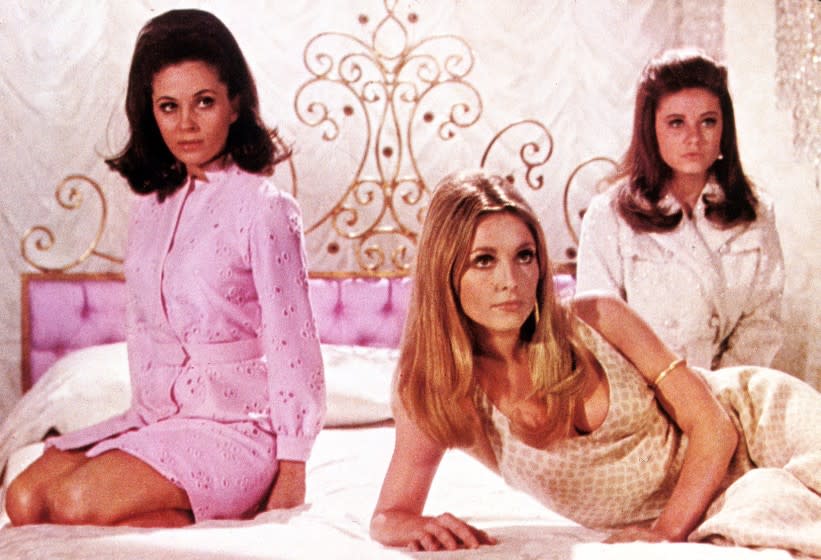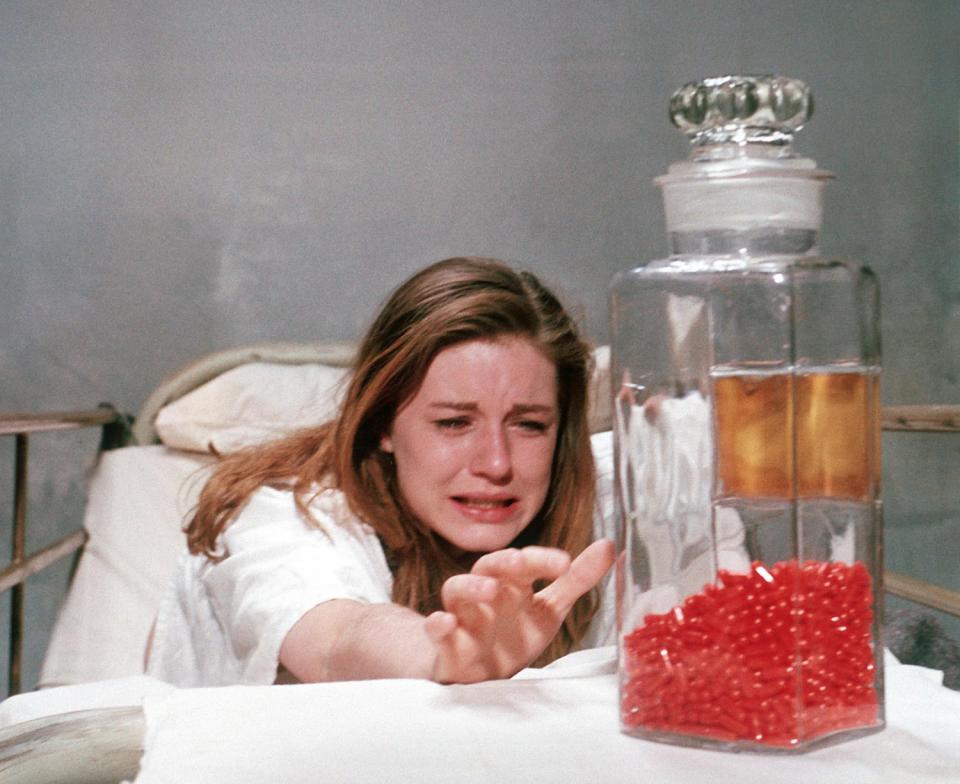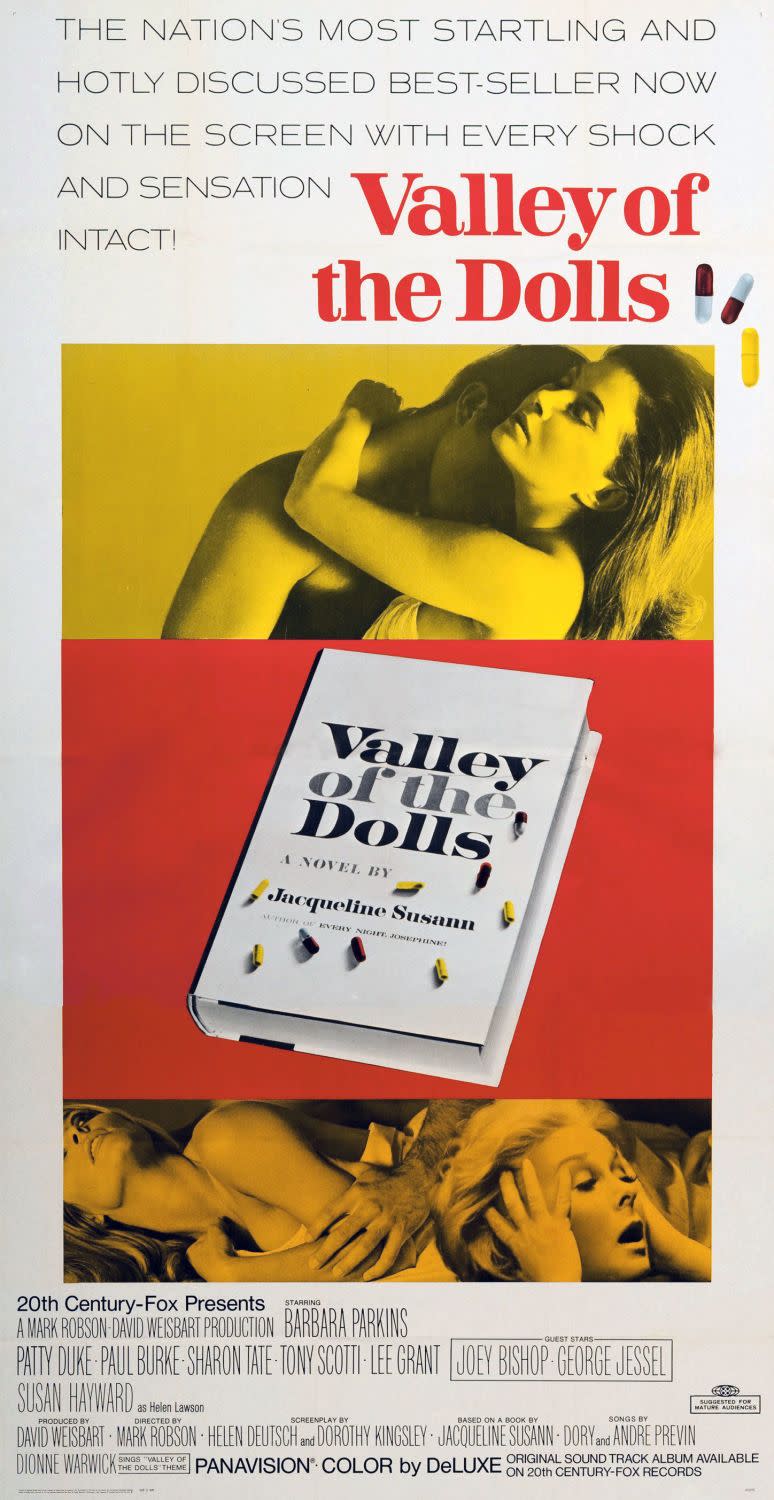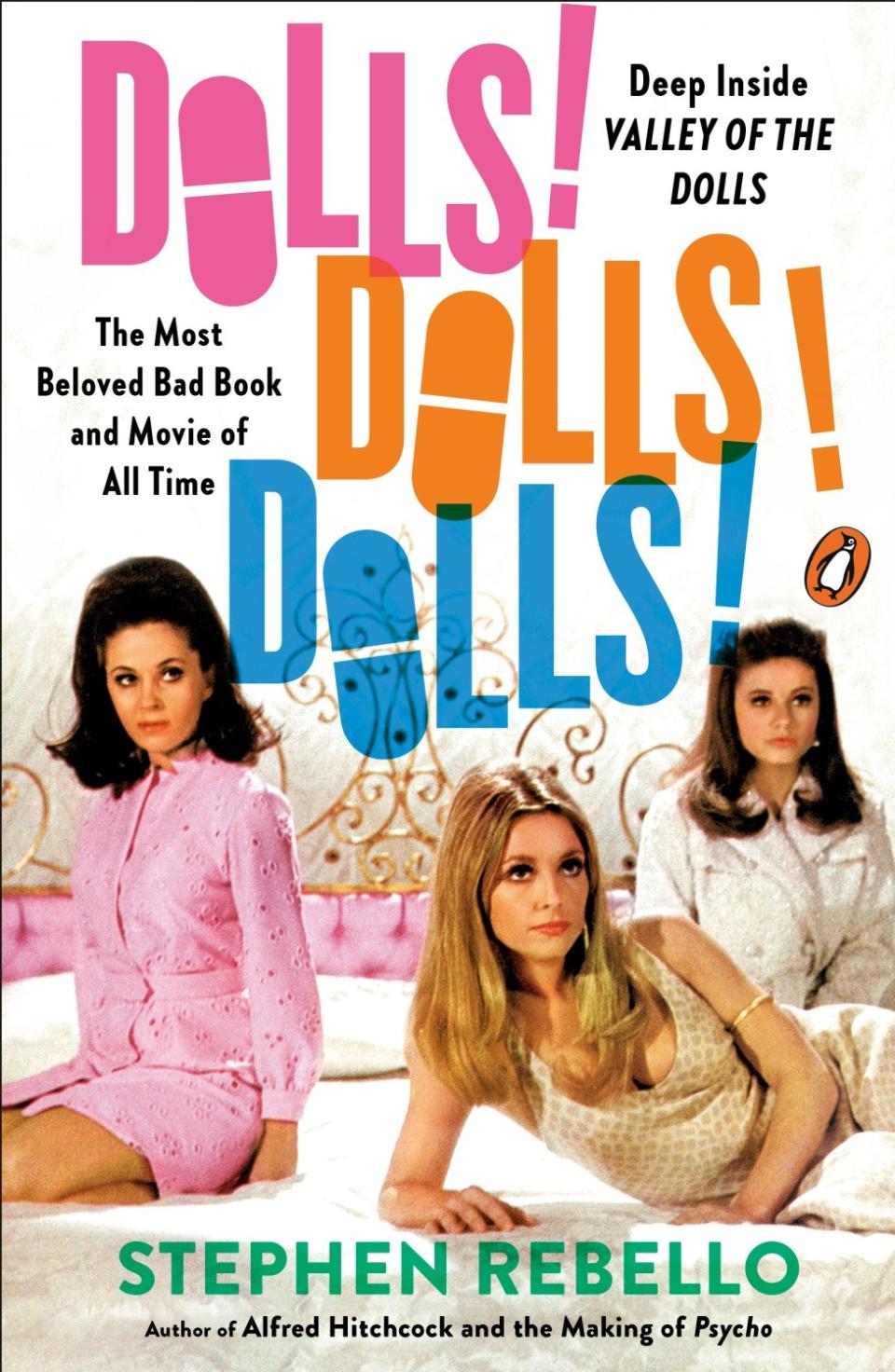Review: The uncanny valley of the 'Dolls' making-of tell-all

Transforming books into movies and then into books about the making of the movies may sound like a convoluted contortion of intellectual property, but it’s been standard practice for years, from “Casablanca” to “Jaws.” Sometimes it works, and sometimes it doesn’t, but when it does, it helps if the movie is truly great, as with the subject of Stephen Rebello’s fine making-of anatomy of Hitchcock’s “Psycho." (That book itself became another movie; perhaps a making-of will follow, to infinity and beyond.) Sometimes, however, when the movie in question is questionable, and based on a novel that is even more questionable, we enter a house of cards that threatens to collapse with the joker on top of the heap.
Rebello is a skilled writer and shrewd observer of Hollywood. The subject of his latest book, “Dolls! Dolls! Dolls!,” is director Mark Robson’s “Valley of the Dolls,” beloved by fans of bad movies but — let’s face it — no “Psycho.” A titillating tale of sex, drugs and naked ambition in the movie business that passed for lurid in 1966, when pop culture was struggling to shrug off the dead hand of the prudish 1950s, Jacqueline Susann’s proudly trashy novel must have seemed like a nose-thumber to the year’s other, better behaved bestsellers, like Robert Crichton’s “The Secret of Santa Vittoria” and James Michener’s “The Source.”
“Valley of the Dolls” the book (“dolls” was Susann-speak for pills) was on top of the New York Times Best Seller list for 26 weeks, and as of 2017, sales have exceeded 31 million copies. The big question is why? It is one of those perennial mysteries, like the whereabouts of Jimmy Hoffa’s remains. In truth the novel did have the appeal of a parlor game, a roman à clef inviting readers to guess the identities of the movie stars on whom the characters were loosely based.
The movie adaptation that inevitably followed was also a hit in the face of scalding reviews, a dream come true for Susann, a movie star wannabe. Despite spirited disagreement over whether it was pro- or anti-feminist, women flocked to it, with the exception of Susann herself, who told director Mark Robson it was ”a piece of” excrement. Gloria Steinem wrote that it was “for the reader who has put away comic books but isn’t yet ready for editorials in the Daily News.”
It also developed a reputation as catnip for gay readers. As fashion guru Simon Doonan wrote in Slate, “Though not a gay work per se, 'Valley' is nonetheless a très GAY book and an insanely GAY movie. Sensibilities aside, the 'V. of the D.' message was ultimately gay-positive and validating.”
Even the movie’s admirers didn’t exactly like it. They had more fun arguing over whether it was kitsch or camp. Nora Ephron treasured it for its kitschy badness; critic David Kehr called it “too dull to function as camp.” Although it has become an icon of one or the other, the trouble is that it doesn’t rise (or sink) to the level of either; it was and remains just schlock, and not even distinctive schlock.

It doesn’t make those “Worst Movies of All Time” lists, like “Glen or Glenda,” “Plan 9 From Outer Space,” “Howard the Duck” or “Sex Lives of the Potato Men,” and ranks no better than 66 on Flickchart’s worst movies of 1967, well below “The Deadly Bees” and “The Gnome Mobile.” And speaking of Potato Men, Susann had imagined recruiting Gregory Peck, Tyrone Power or the like but had to settle for C-list actors with their glazed-doughnut Southern California tans.
“Dull” doesn’t do the movie justice. It’s the best doll for insomnia ever devised. The huge grosses, meanwhile, were as effective as “Mother’s Little Helper,” the Rolling Stones’ generic name for pills, in neutralizing the bad vibes of the critics, and it didn’t hurt that Susann was a relentless self-promoter — all of the Kardashians rolled into one. She was once reported to have said, “I think I’ll be remembered … as the voice of the ’60s … Andy Warhol, the Beatles and me.” Any sane person might have deleted her in favor of, say, Jane Fonda.
None of this augurs well for Rebello’s project, a maddeningly detailed account of the making of the movie. The story must have looked good on paper. Not only was the movie a smashing success but it was stuffed with stars whose real-life misadventures inspired and/or mimicked the misbehavior of the characters, most notably Judy Garland, hired to play a role based on herself and then fired for being herself, and Patty Duke, whose bipolar issues wreaked havoc on the set. And it offers one of the few opportunities to see Sharon Tate in action before she was murdered.
If gossip is your doll, Rebello has the hookup. He confirms the rumored liaison between Susann and Ethel Merman that degenerated into a blood feud when Susann’s husband threw a drink in Merman’s face. Then there was the ongoing Oedipal battle between 20th Century Fox mogul Daryl F. Zanuck and his presumptive heir, son Richard. The trouble is, few of these anecdotes are attributed or footnoted, leaving it to the reader to guess at the sourcing from the skimpy bibliography. In fact, one of the weaknesses of the book is the complete absence of footnotes, which are essential for an aspiring tell-all like this one.

There’s plenty to feed on in Rebello’s account for the legions of “Dolls” fans for whom no detail about Susann, Duke, Tate, Merman and Garland is too bland, but when all is said and done, I can’t help wishing that he had spent the time, effort and intelligence he squandered investigating “Valley of the Dolls” on a picture that better deserved his attention. Taste is taste, and Susann lovers will disagree, but when people wonder how or why the so-called New Hollywood emerged from the sludge of the ’60s, they might consider a double bill of “Valley of the Dolls” and another movie released in 1967: “Bonnie and Clyde.”

Biskind is the author of many books, including “Easy Riders, Raging Bulls."
Dolls! Dolls! Dolls! Deep Inside the Valley of the Dolls, the Most Beloved Bad Book and Movie of All Times
Stephen Rebello
Penguin: 352 pages, $17

